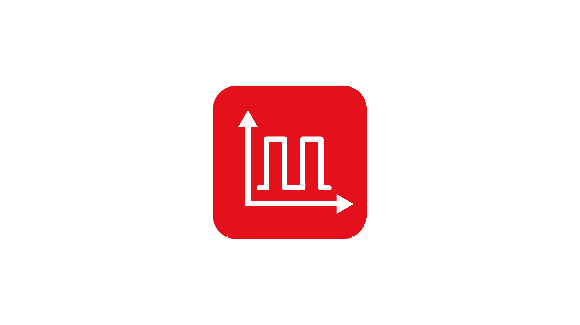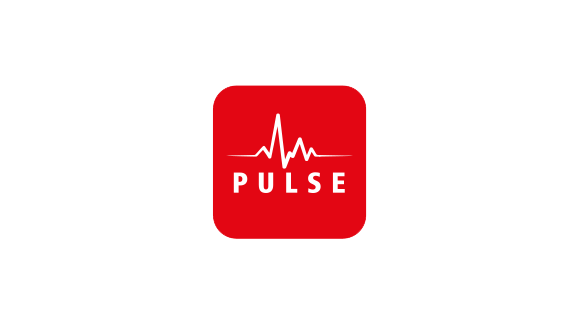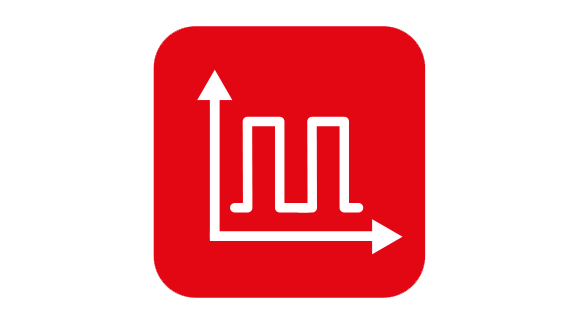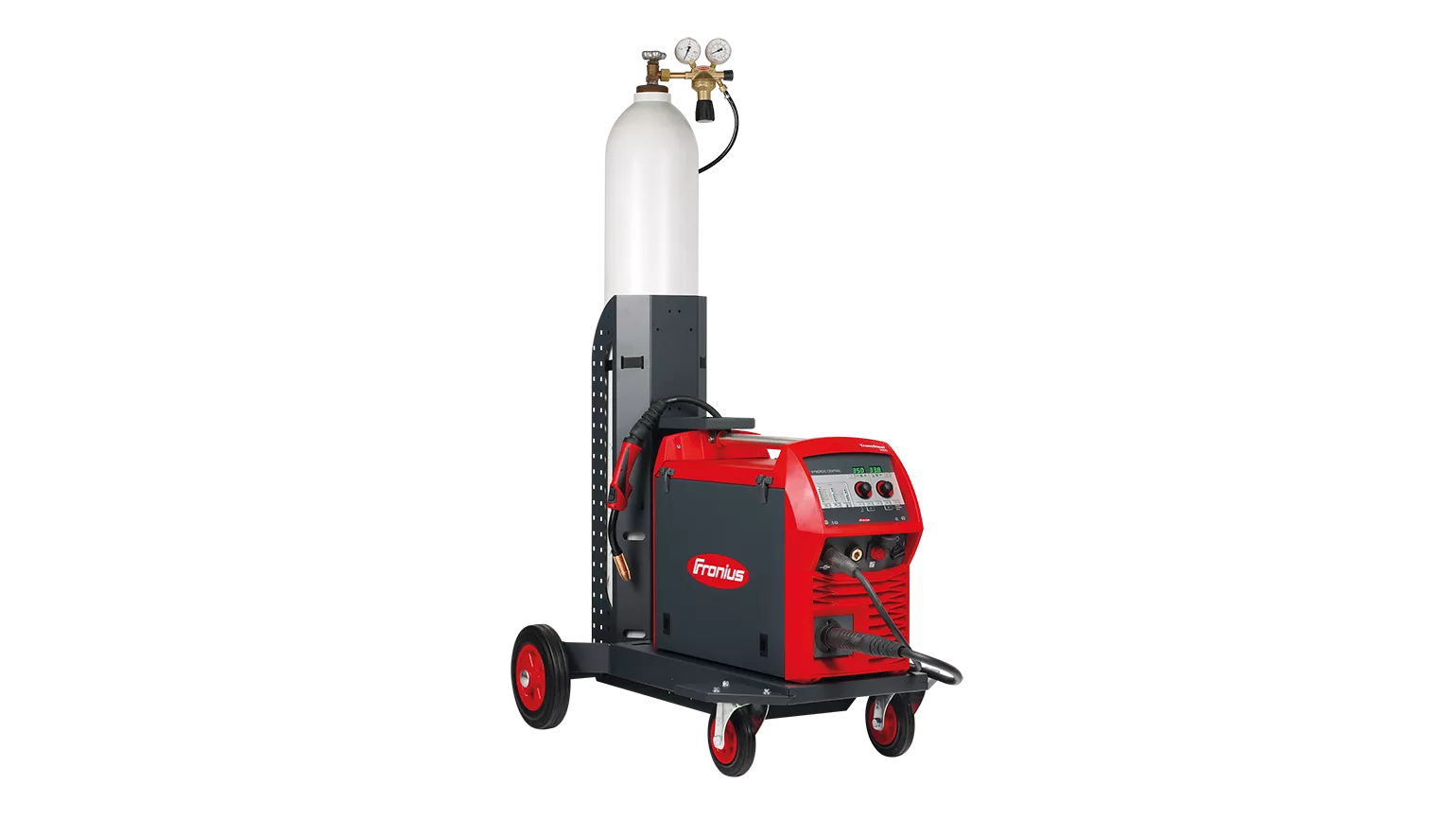TransSteel Compact
No matter what the welding task - MIG/MAG, TIG and electrode welding with just one device.
Please choose your desired product.
Technical Data
General Data
| Mains voltage | 3 x 380V / 400V / 460V |
|---|---|
| Mains voltage tolerance | -10 / + 15% |
| Mains Frequency | 50-60Hz |
| Welding current min. | 10 A |
| Welding current max. | 350 A |
| Welding current / Duty cycle [10min/40°C] | 350A 40% MIG/MAG, MMA, TIG |
| Welding current / Duty cycle [10min/40°C] | 300A 60% MIG/MAG, MMA, TIG |
| Welding current / Duty cycle [10min/40°C] | 250A 100% MIG/MAG, MMA, TIG |
| Operating voltage min. | 14,5 V |
| Open-circuit voltage | 59 V |
| Degree of protection | IP23 |
| Dimension / length | 747 mm |
| Dimension / width | 300 mm |
| Dimension / height | 497 mm |
| Weight | 37,5 kg |
| Weight incl. packaging | 40,5 kg |
| Interference emission class | A |
| Mains cable included | Yes |
| Earth connection | Dinse |
| Einschaltdauer 2 (bei 40°C) | 40 % |
| Einschaltdauer 2 (bei 40°C) | 60 % |
| Einschaltdauer 2 (bei 40°C) | 100 % |
| Schweißstrom 2 (bei 40°C) | 350 A |
| Schweißstrom 2 (bei 40°C) | 300 A |
| Schweißstrom 2 (bei 40°C) | 250 A |
| Length of mains cable | 5000 mm |
The TransSteel multiprocess series
No compromises. TransSteel multiprocess.

One device - for all manual welding applications
Combining MIG/MAG, TIG, and electrode welding in one device means you no longer have to purchase any other power sources. There is absolutely no difference in the welding performance of the respective process compared with a dedicated device.
118 characteristics*
/ Steel, CrNi, AlMg, AlSi, Metal Cored, Rutil FCW, Basic FCW, self-shielded wires
/ 0.8 – 1.2 mm wire diameter
/ Eight different gas mixtures

Ready to weld in three steps
The intuitive operating concept enables welders to start work straight away – no prior knowledge of the device is required. All the essential welding parameters can be viewed and adjusted on the front panel. The only parameters that have to be selected before welding begins are the gas, wire diameter and material thickness.
70% less rework, 30% faster welding
The Pulse function of the TransSteel 3000C permits faster welding speeds on thicker materials. The pulsed arc also reduces the amount of rework, as less welding spatter is generated.* Maximum number of characteristics (TransSteel 3000 C Pulse), will vary depending on the version.
The MIG/MAG welding functions
Pulse
Welding controlled and fast
The new TransSteel 3000C Pulse marks the arrival of the pulsed arc in the TransSteel series. The setting is simply selected from the main menu and facilitates controlled welding in the intermediate arc range.
Spot and Stitch
Welding with no material distortion
Spot mode enables you to place welding spots at regular intervals. As you have complete flexibility over the pause time between the intervals, spot welding is ideal for the tacking of workpieces. Stitch welding not only produces a rippled seam appearance, the low level of heat input reduces any possible material distortion when working with light gage sheets.

Special 4-step
Mode for a more stable arc
The “Special 4-step mode” is particularly suitable for welding in the higher power range. In special 4-step mode, welding starts at a lower power, which makes the arc easier to stabilize.
SynchroPulse
Seam rippling for aluminum alloys
The “SynchroPulse” option is recommended for the welding of aluminum alloys when a rippled seam appearance is required. This effect is achieved by modifying the welding power between two operating points.
! SynchroPulse works in Standard Synergic and Pulse Synergic Mode – but only on the TransSteel 3000, 4000 and 5000 Pulse


Steel transfer technology
/ Steel is the universal characteristic for quick and easy welding applications.
/ Steel root is the characteristic specifically developed for root pass welding. It is characterized by particularly strong gap-bridging ability, in other words, the ability to fill wide gaps.
/ Steel dynamic is a characteristic with a particularly hard and concentrated arc, resulting in high welding speeds and deep penetration.
/ PCS (Pulse Controlled Spray Arc) characteristics* facilitate a combination of pulsed and spray arcs – the result is deep penetration with minimal spattering.
* TransSteel 3000C Pulse
Corrections during welding
The arc length correction and arc-force dynamic welding parameters can be used to optimize the welding result.
Arc length correction
To change the arc characteristic
– shorter arc, reduced welding voltage
o neutral arc
+ longer arc, increased welding voltage
Arc-force dynamic
For influencing the short-circuiting dynamic at the instant of droplet transfer
– hard, stable arc
o neutral arc
+ soft, low-spatter arc
Pulse correction
For correcting the pulse energy of pulsed arc
– Slower droplet detachment force
o neutral droplet detachment force
+ higher droplet detachment force

The TIG welding functions
TIG
Pulse welding
Pulse welding is primarily used for out-of-position welding or when welding especially thin materials. The pulse setting range is from 1 Hz to 990 Hz.
TAC
Tacking function
The weld pool is made to oscillate by means of pulse currents. This makes it easier to tack components together and reduces the tacking time. The pulsed arc facilitates the process with very thin materials, since the temperatures are slightly lower in the phases with less current.
- Time saving of up to 50% for the usercompared to conventional tacking
- Fast tacking points without burning off the edges
- Minimal temper coloration at the tacking points
- Spot function

Touchdown ignition
The highly accurate touchdown ignition is on a par with high frequency ignition and contributes towards user-friendliness.
Gas pre-flow time + Gas post-flow
TransSteel automatically calculates the duration of the optimal gas post-flow time according to the set welding current. This improves the gas shield of the weld seam end and tungsten electrode.

The MMA welding functions
Anti-stick function
prevents sticking of the electrode
If a short circuit occurs (electrode sticking during electrode welding), the welding process is switched off immediately. This prevents electrode burn-out and/or serious weld seam faults.
Hot start function
when igniting the arc
In order to make the electrode easier to ignite, the current is increased for a split second during ignition on the power source.

Arc-force dynamic
Seam rippling for aluminum alloys
If basic electrodes are welded with coarse droplet material transfer at a low current (underloaded), there is a risk of sticking. To rule this out, more current is supplied for fractions of a second just before sticking. The electrode burns free, preventing sticking.


USB thumb drive export function
A USB thumb drive can be connected to the rear of the device (the stick is included as part of the scope of supply with the Easy Documentation option). The drive can then be used to export a CSV file containing welding data.
Easy documentation recording of welding parameters
Easy Documentation records the following welding parameters:
/ Power source ID// Firmware version
/ Serial number// Process (Manual, Standard, Pulse, TIG, MMA)
/ Current / voltage / wire speed in the main process phase
/ Power from instantaneous values “IP” (Instantaneous Power) - energy / time (in the main process phase)
/ Energy from instantaneous values “IE” (Instantaneous Energy) over the entire welding operation
/ Motor current (in the main process phase)
/ Time stamp hh:mm:ss when current starts to flow
/ Counter
/ Welding duration
/ Error no. when welding is terminated
/ Wire speed (metric and imperial)
/ Characteristic number
/ Operating mode (2T, S2T, 4T, S4T, spot welding, stitch welding, SynchroPulse)
/ Signature for each weld seam number
/ Template for .csv file
/ Easy Job number
* TransSteel 3000C Pulse and TransSteel 3500C only









